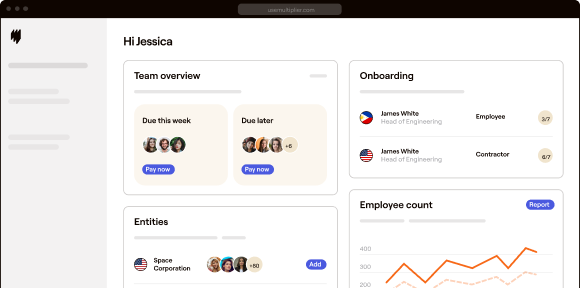The pandemic flipped the world on its head, and the fallout is still visible across all industries. Many companies continued to operate effectively, thanks to remote workers. But as more people began to work from home and realize the benefits, returning to the office was less appealing and, for many, less productive.
For the last few years, remote has been the new norm, and employees have grown to love its flexibility and freedom. Today, the future of remote work is less certain. But that’s not to say it doesn’t have a future. It just may require some wiggle room from employers and employees.
In this article, we’ll explore the current state of remote work, the impact of returning to the office, and why hybrid arrangements are becoming more prominent.
The remote and office tug-of-war
We’re approaching a new year, and the employment landscape is on the cusp of significant changes. Generally speaking, employees are satisfied with remote arrangements, as they contribute toward a happier and healthier work-life balance. A report earlier this year shows that 98% of employees would like to work remotely and would recommend it to friends.
And while keeping employees happy and fulfilled is a crucial objective for all organizations, these things don’t keep the lights on — but improved productivity and revenue do.
One of the biggest employment trends right now is the return to the office (RTO), with a survey revealing that 90% of companies intend to RTO by the end of 2023. 72% of respondents attributed improved revenue as a key motivator. So, you can see the difficulty for HR leaders who predict tug-of-war situations in the near future. Employers want their employees in the office, who, for the most part, feel more happy and productive at home.
Quite the conundrum. Fortunately, the solution for keeping everyone happy is already a tried and tested employment arrangement — hybrid work. Time will tell as we enter a new era of post-pandemic employment, but the need for common ground and productivity is more urgent than ever.
Is hybrid the future of work?
The pandemic had a massive impact on our personal and professional lives. The latter required a drastic shift toward remote work, a modern approach where technology enables flexibility and productivity. At the time, it was a necessary solution and a business lifeline. Today, many business leaders want workers back in the office and to move away from their fully-remote status.
Every company is unique, meaning that there’s no one-size-fits-all solution. Studies show that fully remote work makes companies 10%-20% less productive, but it’s not as easy as just reverting back to how things were. Employees have gained new freedoms and flexible work lives. This must be considered and accommodated when making big decisions regarding the workforce.
Hybrid structures will likely be the solution for companies that need people in the office but recognize the benefits of remote work for employees. However, success will be determined by how innovative and creative employers are with their design and implementation of hybrid work. It should be an ever-evolving process that continually ensures that all parties thrive.
To achieve this, business and HR leaders must invest in technology, more specifically, workforce management solutions. Introducing autonomy and a higher level of efficiency is essential for hybrid work. Gartner predicts that 39% of knowledge workers will be in hybrid arrangements by the end of 2023. If your business hopes to do the same, optimizing with productivity in mind is critical.
Productivity, productivity, where art thou?
Sometimes, too much freedom and flexibility can be bad for business.
*HR professionals splutter their morning coffee in disgust*
Before you call human resources, this isn’t a rallying cry for employers to put a chokehold on flexibility. It’s about optimizing employment for maximum output. Productivity issues arose during the pandemic, but in all fairness, it was a pandemic. However, productivity has continued to be a problem for businesses in the years since.
It’s among the top priorities for business and HR leaders for 2024. There’s no doubt that there have been considerable strides in the HR space, with employee well-being and engagement initiatives leading to the highest job satisfaction rates in decades. Alas, productivity still struggles.
Fortunately, there are viable solutions to inspire change. As mentioned, hybrid work structures will be favored by many businesses, allowing them to boost productivity and engagement by bringing workers back to the office. For most of the working week, at least.
However, the most powerful weapon in the fight for productivity is technology. Most notably, using automation to save time and money and increase output — as well as the adoption of data-led approaches to work and recruitment. Here, performance monitoring and data analysis will prove vital for identifying weaknesses and productivity stagnation, as well as forecasting future needs.
If AI handles tedious tasks, it increases efficiency while providing opportunities for employees to move up the ladder and acquire new skills. Along with helping employees become more skilled, automation ensures recruitment and onboarding are quicker and more effective. A study shows that companies using generative AI drastically reduce onboarding time while increasing the quality of work by 30%.
Optimize for productivity, optimize your workforce
It’s easy to assume that productivity is dependent on the attitudes and work ethic of your employees. But the reality is that employers must provide more than a paycheck to keep employees motivated, happy, and productive. HR experts should be creative and diligent in identifying and implementing new workflows that help the business and its employees thrive.
This is where technology has evolved. Once a flashy tool, it’s now a must-have for pretty much every industry. If you hope to boost productivity, engagement, and job satisfaction — you’ll need tech-based solutions and a wealth of data to learn from. As time passes, you’ll use workforce management solutions for HR tasks, performance monitoring, and informing and updating policies.
Never before have organizations had such impressive tools to leverage data and insights. When introducing new structures, success or failure is determined by how fast you learn and adapt. Data and automation offer a whole new world of insight, allowing for greater exploration of your workforce and its individual and collective capabilities. 76% of HR leaders believe that companies not using AI will lag in organizational success compared to those that do.
The tools are right there; all you need to do is pick them up.
Boost productivity with Multiplier
Global hiring provides a deep and diverse talent pool without the restrictions of domestic recruitment. Our platform streamlines onboarding processes to save time, maximize efficiency, and ensure employees are ready to work as soon as possible. No delays, bottlenecks, compliance issues, or any other reason for productivity to take a hit when you hire new talent.
Just think how much time you’ll save by automating tedious HR tasks, allowing employees to adopt new responsibilities and skills. Sounds… productive. Want to learn more about how Multiplier can optimize your workforce? Talk to our experts today!






